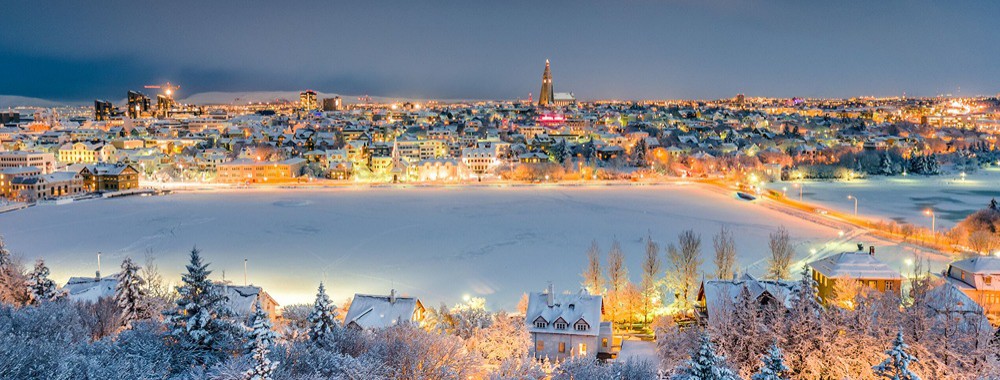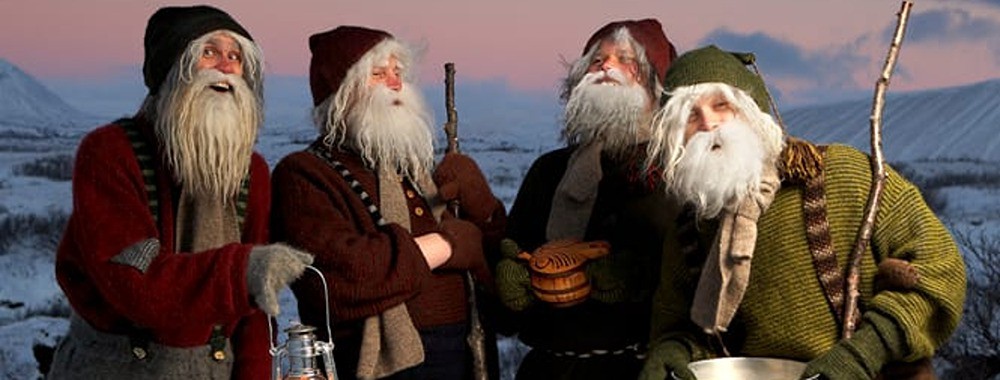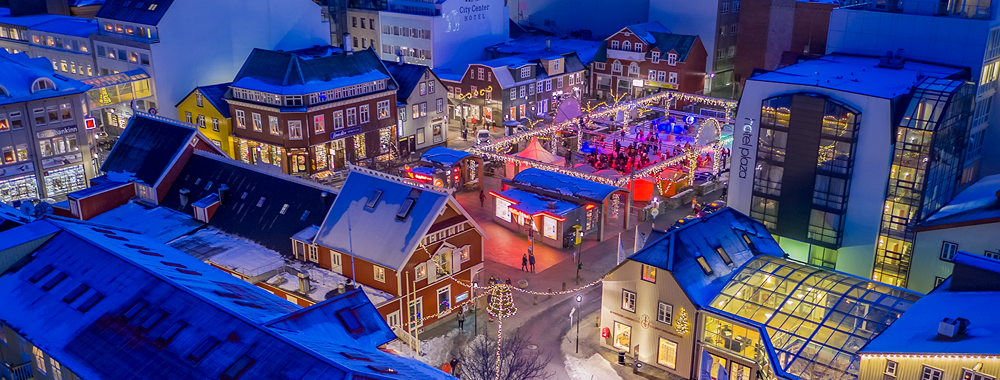- About Us
- Hotels
- Resorts
- Excursions
- Car Hire
-
Blog
- Food & Drink
- Things to do in Iceland
- Iceland Volcano Latest News
- Summer in Iceland
- People & Places in Iceland
- Climate, Geology & Seismic Activity in Iceland
- Travel & Hotels in Iceland
- Northern Lights in Iceland
- Reviews
- Icelandic Culture & History
- Landscape & Wildlife in Iceland
- Blue Lagoon and Hot Springs
- Corporate Incentive Group Trips to Iceland
- Iceland and COVID-19
- Geysir Geothermal Area Iceland
- Super Jeep Tours
- Films & TV Shot on Location in Iceland
- Contact Us
Iceland has some fun, and slightly terrifying, Christmas traditions. Learn about them all before your visit!
In Iceland, holiday traditions include familiar elements like cookies, decorations, and Christmas trees, with unique Icelandic twists. Instead of Santa Claus, there are the mischievous Yule Lads—13 pranksters with names like Spoon Licker and Door Slammer. On the 23rd, Icelanders indulge in skate, known for its distinctive ammonia smell, and there's a legendary Yule Cat that supposedly devours naughty children.
Here are 13 traditions to enjoy during your Christmas time adventure to Iceland!
-
The 13 Yule Lads: Iceland boasts the 13 Yule Lads, mischievous characters akin to the Icelandic Santas, descending from their mountain cave each of the thirteen nights before Christmas to deliver small gifts to well-behaved children. Each Lad, with names like Spoon Licker and Skyr Gobbler, brings unique cravings and antics.
-
Christmas in North Iceland: The Christmas Garden in North Iceland, near Akureyri, immerses visitors in festive traditions, showcasing Icelandic customs alongside global holiday items. Handmade crafts, Yule Lads, and the picturesque Dimmuborgir, where the Yule Lads reside, contribute to the enchanting atmosphere.
-
Jólabókaflóð: Jólabókaflóð, meaning "Christmas book avalanche," is a longstanding Icelandic tradition since WWII. Fueled by wartime paper abundance, it involves a flood of book releases from November to Christmas. Post-gift opening on December 24th, Icelanders unwind with their new books, turning the holiday into an extended literary celebration.
-
Laufabrauð: Laufabrauð, or "leaf bread," a traditional Icelandic holiday bread, is round, delicate, and adorned with intricate leaf-like patterns. Families often gather to make it together, cutting patterns with a laufabrauðsjárn (leaf bread iron) and frying the dough to a golden crisp. It's served with various toppings like hangikjöt or ptarmigan.
-
Yule Cat: The Yule Cat, or Jólakötturinn, is an iconic Icelandic Christmas figure, feared for devouring those without new clothes—a soft gift. According to legend, hardworking individuals, even with just socks, can avoid the Yule Cat's wrath. A poem emphasizes working hard throughout the year to escape the cat's clutches.
-
Things to Do Around Reykjavík: Reykjavík embraces Christmas Creatures as part of its decorations, featuring the 13 Yule Lads, Grýla, Leppalúði, and the Yule Cat. A pop-up skating rink in downtown Reykjavík adds to the festive atmosphere.
-
Baking Away the Days: Home baking is a cherished Christmas tradition in Iceland, dating back to the early 1900s. Families bake a variety of cookies throughout December, with lakkrístoppar, meringue cookies with licorice topping, being a popular choice.
-
Soft Woolen Gifts: Icelandic tradition involves giving soft gifts to avoid the Yule Cat's appetite. Hand-knit items like socks, mittens, and sweaters made of Icelandic wool are popular choices, making for perfect holiday gifts.
-
Steer Clear of Grýla: Grýla, a giantess with a penchant for naughty children, roams Iceland during Christmas. Thwarting her involves providing food or chasing her away. Grýla, her lazy husband Leppalúði, and the Yule Cat are part of Icelandic folklore.
-
Cheers to Christmas Beer: Christmas beers, released by Icelandic brewers during the holiday season, showcase diverse flavors. With 33 brewers producing 78 seasonal beers, it's a time of experimentation and celebration.
-
Hangikjöt: The Taste of Icelandic Christmas: Hangikjöt, or smoked lamb, is a centerpiece of Icelandic Christmas. Preserved by hanging and smoking, it can be served raw or cooked, often accompanied by potatoes, bechamel sauce, peas, and traditional Christmas bread, laufabrauð.
-
Holiday Elixir: Malt & Appelsín: Malt & Appelsín, a blend of dark malt soda and orange soda, is a popular Christmas drink. Known as jólaöl, it's enjoyed for its frothy, non-alcoholic appeal and complements salty holiday foods.
-
Thorláksmessa: Saint Thorlákur's Mass Day on December 23rd involves decorating Christmas trees and finishing holiday shopping. It also includes the tradition of eating fermented skate, a practice dating back to Catholic meat fasting before Christmas.
If you'd like to enjoy Christmas in Iceland, check out our fantastic Christmas & Northern Lights package holiday here. Alternatively, let us create you a bespoke itinerary and contact us at info@icelandholidays.com.
- View all our latest offers here
-
Reykjavik City Breaks
from £649.00 View offers -
Fly Drive Holidays Iceland
from £679.00 View offers -
Guided Iceland Bus Tours
from £649.00 View offers -
Luxury Iceland Breaks
from £849.00 View offers -
Northern Lights Holidays Iceland
from £679.00 View offers -
Top 10 Iceland Holidays
from £699.00 View offers -
North Iceland Holidays
from £999.00 View offers -
Group Travel to Iceland
from £849.00 View offers
Call us on +44 (0) 1773 850222

Thank you so much Gareth for organising such a lovely holiday for us! We gave a basic outline of what we wanted from our holiday and Gareth organised everything. Everything ran very smoothly and what an amazing experience. Thank you for all your suggestions, so glad we took them on
We are here to reassure you that you can trust our team with your Iceland holiday plans, knowing that all bookings with us are ATOL protected








